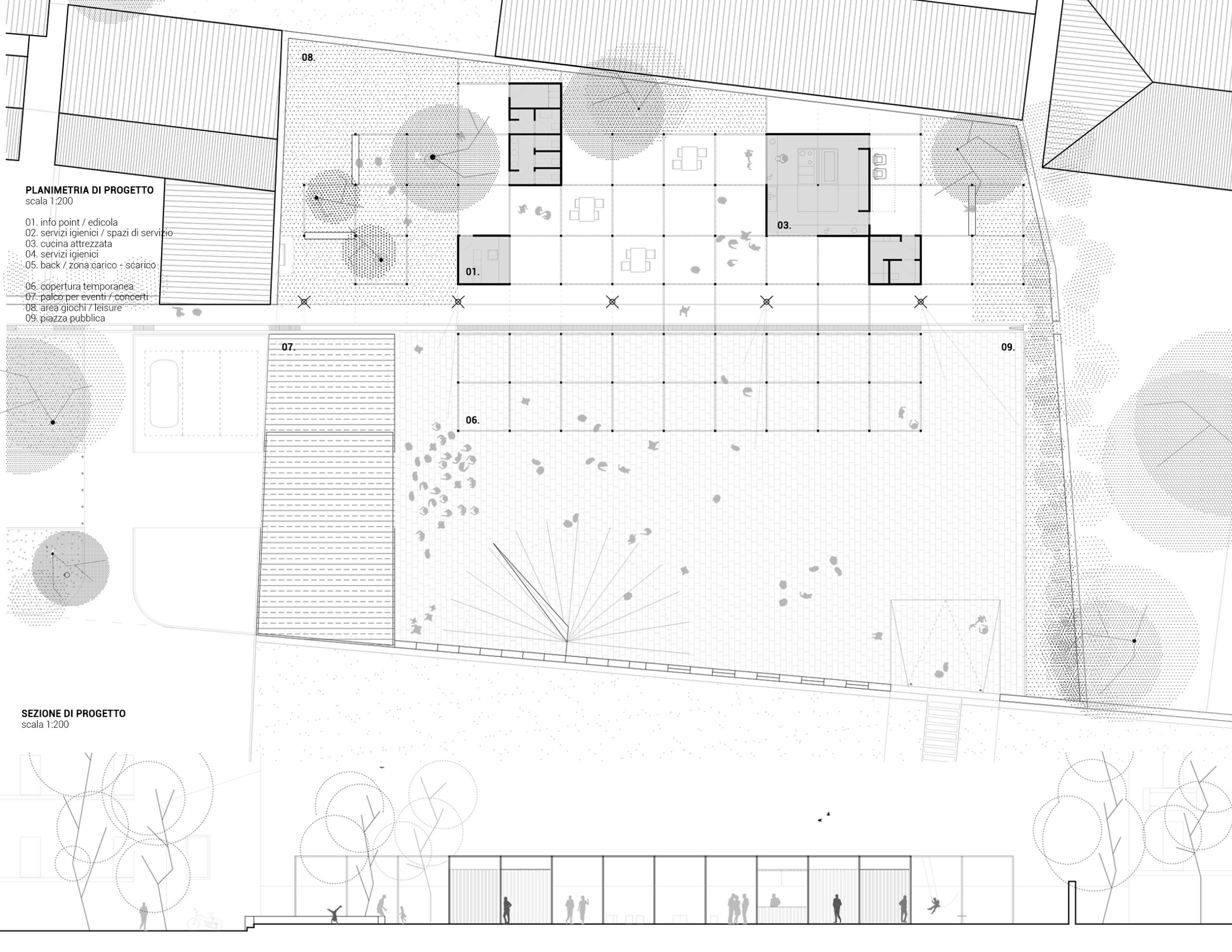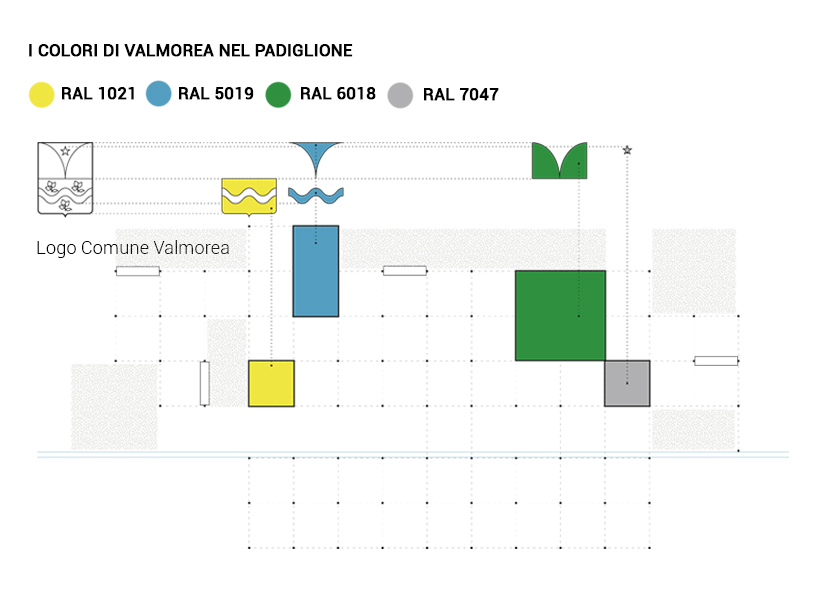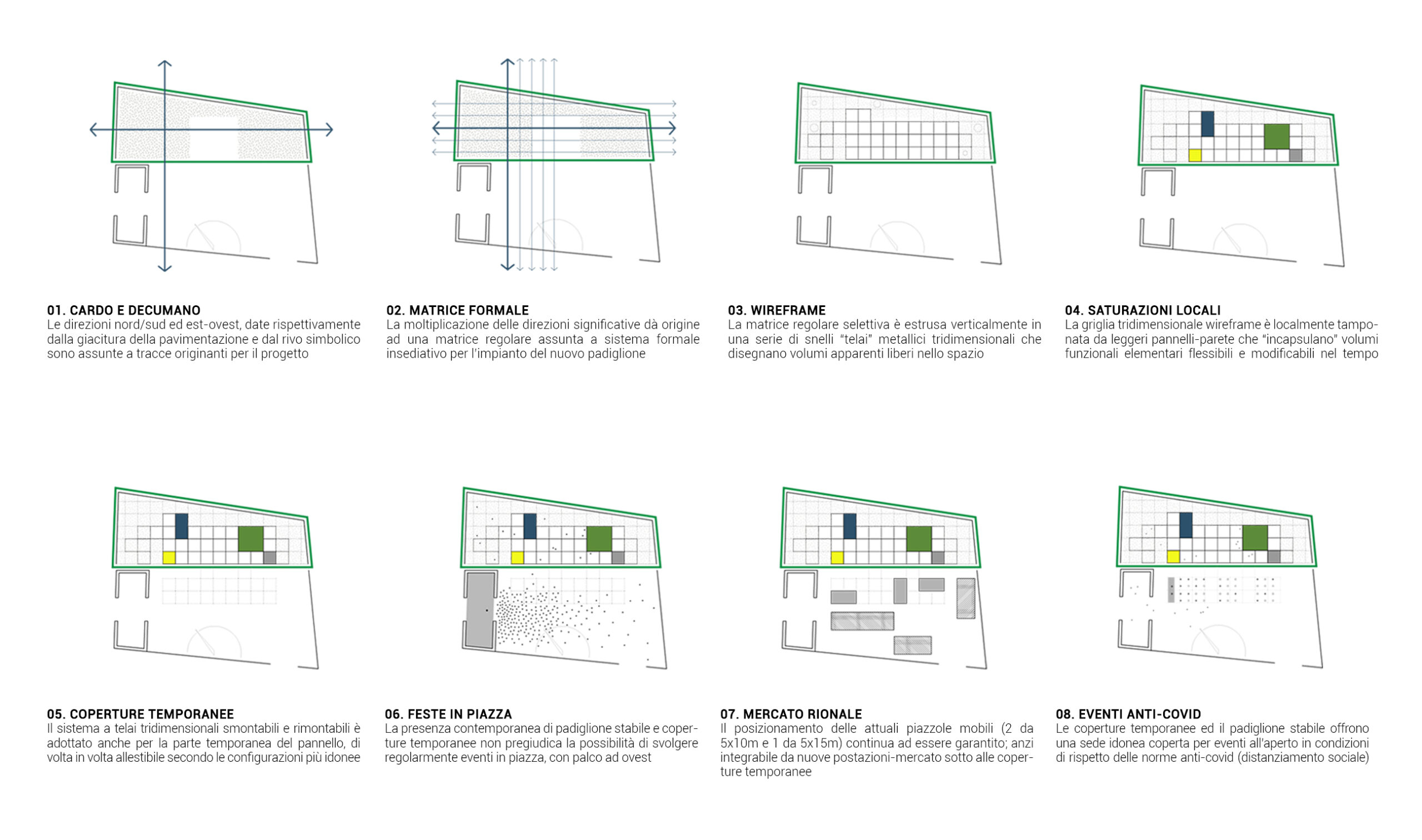The project for the new festival pavilion chooses to act with a light hand on the delicate context of the public spaces settled in time, intervening with respect and discretion. It does not destroy, it enriches; does not erase, if anything, reread, with attention and lightness.
Rather than a simple building, we prefer to think of an open and flexible, alterable, convertible, integrable or even completely replaceable “system” when it runs out of vital energy within the social structure and its methods of self-representation. Yes, because contemporary design can no longer ignore the crucial consideration of the time variable: in an age when every transformation is fast and potentially overwhelming, what seems indispensable to us today may no longer be so in a few years’ time, what seems right and desirable to us now may no longer seem like one in a short time.
A large regular matrix consisting of elementary mesh sizes of 3×3 meters is assumed as a formal settlement tool for the design of new equipment. The geometric grid, positioned in the perfect recovery of the two main directions of the existing square, traces a mosaic seat where the individual modules are vertically “extruded” in light frame structures 4 meters high.
Wireframe frames define a cross-passable three-dimensional lattice that, delimited superiorly by a light roofing plane (also with a modular constitution) takes the form of a large habitable urban porch where 4 main functional volumes find shelter: 1) The kitchen: double view, one towards the permanent covered space and one towards the interface object with the public, for sale, exposed to the square. 2) Personnel services: angularly tangents to the volume of the kitchen, generate a technical “behind the scenes” intended for the movement of operators as well as for the “invisible” and safe collection and storage of waste. 3) The toilets for the public: they are separated by sex and equipped also for the disabled; the volume also houses a storage room for cleaning equipment, maintenance tools, fitting accessories as well as niches for electrical panels and meters. 4) The jolly volume: it can take on different functions depending on the needs related to the holidays (ticket office events, booking and purchase box, small bar) or accommodate a pseudo-permanent function outside public events (newsagent, florist, tobacconist, other).
The functional volumes – in the desire to attribute to the public space, now almost monochromatic, a playful and light character – are tinged with gold, blue, green and silver, the four colors of the Gonfalone di Valmorea.
Chronology: 2021 Project and Competition
Category: Public Spaces, Pavilions
Program: New Post-Pandemic Pavilion For Public Festivals
Design Team: Tomas Ghisellini, Emanuele Stendardo, Francesco Monaco
Graphics: Lucrezia Alemanno
Collaborators: Daniele Francesco Petralia









